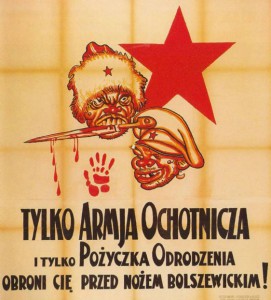Jestem Żydem a Polska jest moją Ojczyzną.... I am a Jew and Poland is my
homeland -
these words of Artur Szyk perfectly illustrate his mutually inclusive
identities which infused his art for four decades.
As many of you know
the Artur Szyk exhibit at the New York Historical Society will be opening on
September 15, 2017 and will continue through January 21, 2018. Although this is
not a large exhibit, it will give you a clear idea of some aspects of his work.
Artur Szyk was
extremely well known during his lifetime - not only for his illumination of the
Statut of Kalisz or the Book of Esther - but also for his caricatures of Hitler
and Mussolini. He also prepared a number of illustrations which appeared in
the Polish Pavilion at the New York World's Fair of 1939.
However, this artist,
who had fought by using his art from 1919 through 1945 - is completely unknown
(except for specialists or Jewish scholars) in contemporary Poland and barely
known in the United States. There are four reasons for this
1- His service in the
Polish Army during the Polish Bolshevik War of1919-1920 - vide his
anti-Bolshevik poster

2- His service to
Inter-war Poland - both creating illustrations of Piłsudski and the work for
the Polish Pavilion (among others)
3- The fact that
in the period of 1939-1941, i.e. while the Soviet Union was allied with Germany
- he depicted Stalin in that role vide the following depictions of Stalin and
Hitler together


(There was a series of
illustrations showing Stalin, Hitler, Mussolini and Petain. The second illustration in this group is
entitled Poland Greets Her Good Neighbors)
4- The fact that he
allied himself with the Polish Government in Exile in London and was sent by
them to the US to continue his anti-Hitler work in the US
5- The fact that he
did not return to Poland after the war
6- The fact that he
supported the creation of the State of Israel
all led to knowledge
about him being suppressed in Poland - to the extent that even the director of
Muzeum Dworku Paderewskiego did not know that the Paderewski Illustration in
the museum was by Szyk (this in 2015!!!)
An illustrated
brochure - in both English and Polish, prepared by the Piłsudski Institute and
Krystyna Piórkowska will be available at various Polish and Polonia
organizations in the New York area - including
- the Consulate General of the
Republic of Poland
- the Polish Cultural Institute
- the Kosciuszko Foundation (both
New York and Washington,DC locations)
- at St. Stanislaus B&M
Church (Manhattan)
- as well as the Piłsudski
Institute in America.
Feel free to stop by
any of these locations after September 14th to pick up a copy.... or check at
your local Polonia organization to see if they have a copy available.
Do visit the exhibit
and to read the brochure which will serve to introduce Artur Szyk.
Congratulations to
Irving Ungar, curator of the exhibit.
Consulate General of
Poland - Madison Avenue and 37th Street (Jan Karski Corner)
Polish Cultural
Institute - 60 East 42nd Street Suite 3000
Kosciuszko Foundation
- 15 East 65th Street
St. Stanislaus Church
- 101 East 7th Street
Piłsudski Institute of
America - 138 Greenpoint Avenue Brooklyn